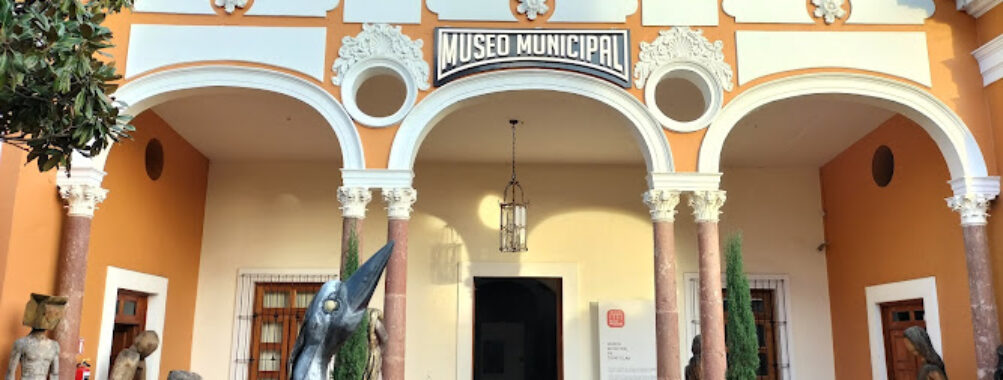
Tepatitlan’s Municipal Museum
“`html
Table of Contents
Description
Tepatitlán’s Municipal Museum is one of those places that doesn’t just tell history—it feels like it breathes it. Housed in a neoclassical-style mansion dating back to the early 1900s, the museum carries with it a sense of dignity and quiet charm that’s hard to replicate. Originally the residence of a chaplain, later a school, and finally transformed into a museum in 2001, the building itself has lived many lives before becoming the cultural hub it is today. Travelers who step inside are greeted with an authentic glimpse into the story of Tepatitlán de Morelos and the wider Los Altos de Jalisco region.
The exhibits cover everything from the mysterious pre-Hispanic Tecuexe culture to colonial life, religious traditions, and even snapshots of modern-day Tepatitlán. And while some museums can feel a bit overwhelming, this one strikes a nice balance—small enough to explore in a couple of hours, yet rich enough to leave you with a deeper appreciation for the area. It’s not perfect, of course. Some displays could use a refresh, and not every section is as polished as you’d expect in larger city museums. But that’s part of its charm—it feels genuine, not overproduced. The staff are usually welcoming, and the atmosphere is relaxed, making it approachable for both history buffs and casual visitors. Families often find it especially enjoyable since the museum is kid-friendly and has a peaceful garden space where children can stretch their legs.
Overall, the museum is a thoughtful stop for anyone curious about the cultural roots of Jalisco. It might not wow you with flashy technology or interactive screens, but it will leave you with stories, images, and a sense of connection to the people who shaped this region. And honestly, that’s what makes it worth the visit.
Key Features
- Permanent exhibits on the Tecuexe culture and other indigenous settlements of the region
- Collections of colonial-era artifacts, religious art, and everyday objects from Tepatitlán’s past
- Photographic archives documenting the growth of the city and its communities
- Temporary exhibitions showcasing local artists and cultural projects
- A charming botanical garden that offers a quiet retreat after exploring the galleries
- Wheelchair accessible entrance and restrooms for added convenience
- Restrooms available on-site, though no restaurant facilities
- Family-friendly environment with displays that spark curiosity in children
Best Time to Visit
The museum is open year-round, but the best time to visit depends a little on your travel style. If you’re already in Tepatitlán for the famous April fair, stopping by the museum during that festive season adds context to the celebrations—it’s like connecting the dots between tradition and history. On regular weekdays, the museum tends to be quieter, perfect for those who prefer a slower pace and fewer crowds. Mornings are usually the calmest, and the natural light streaming through the old windows makes the exhibits even more atmospheric.
If you’re not a fan of heat, avoid the midday summer hours since Tepatitlán can get pretty warm. The cooler months, from November to February, make walking around town and spending time in the museum’s garden much more pleasant. Personally, I’d say a weekday morning in late winter is the sweet spot—you get the peace and the weather working in your favor.
How to Get There
Reaching Tepatitlán’s Municipal Museum is straightforward if you’re already in the city. The museum is located in the historic center, which makes it easy to combine with a stroll around the main plaza, the cathedral, and nearby cafes. If you’re coming from Guadalajara, the drive is about an hour and a half, depending on traffic. Buses also run regularly from Guadalajara’s main terminals to Tepatitlán, dropping you close enough to walk to the museum.
For those who like wandering on foot, the museum is within walking distance of most central attractions. And honestly, walking through Tepatitlán’s streets before or after your visit is part of the experience—you’ll pass bakeries, little shops, and maybe even catch a street musician or two. Parking can be found nearby, but like in most Mexican towns, it’s easier if you’re not in a rush.
Tips for Visiting
Here are a few practical and personal tips to make your visit smoother and more enjoyable:
- Go early in the day: The museum feels more intimate when it’s quiet, and you’ll have time to linger without feeling rushed.
- Bring cash: Entry fees, if any, are usually modest but often cash-only. Small bills are best.
- Don’t skip the garden: It’s easy to overlook, but the outdoor space is a lovely spot to sit and process everything you’ve seen inside.
- Ask questions: The staff often know little stories or details that aren’t written on the exhibit labels. You’ll walk away with a richer experience.
- Pair it with local food: Since there’s no restaurant inside, plan to eat nearby. Tepatitlán is known for its carne en su jugo and sweet cajeta candies—both worth trying after your museum visit.
- Good for kids: If you’re traveling with children, bring them along. The museum isn’t overwhelming, and the mix of artifacts and open space keeps them engaged.
- Be patient with imperfections: Some displays may look a bit dated, but that doesn’t take away from the authenticity. In fact, it adds to the sense that you’re stepping into a living memory of the town.
In the end, Tepatitlán’s Municipal Museum is less about shiny exhibits and more about connection—connection to the past, to the people, and to the rhythms of this part of Jalisco. If you give it the time and openness it deserves, you’ll leave with more than just photos—you’ll carry a piece of Tepatitlán’s story with you. And that’s the kind of travel memory that sticks.
“`
Location
Places to Stay Near Tepatitlan's Municipal Museum
Find and Book a Tour
Explore More Travel Guides
No reviews found! Be the first to review!